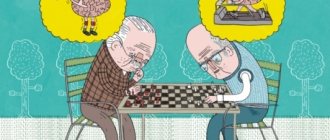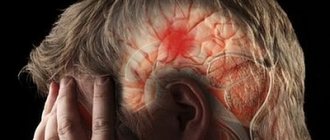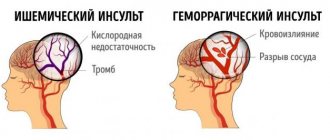Content:
- Why withdrawal syndrome occurs: mechanisms of formation of nicotine addiction.
- Clinical picture of withdrawal syndrome.
- Why is treatment for nicotine addiction important?
- How to ease the symptoms of withdrawal symptoms.
“Quitting smoking is easy! I've done this a thousand times! It is this statement by Mark Twain that accurately characterizes numerous attempts to get rid of the almost irresistible craving for cigarettes. Despite a lot of information about the dangers of tobacco smoke, smoking is often perceived as a completely harmless (and until recently, fashionable) habit. Usually it all starts as an innocent indulgence - a couple of cigarettes when talking with friends, discussing the latest news in the smoking room in the office, and many do not notice how a few pieces gradually grow into a dozen, or even a pack a day. And quitting is no longer so easy: in addition to psychological, nicotine causes physical dependence. And without competent psychotherapeutic and medication assistance, it is very difficult to cope with withdrawal symptoms when quitting smoking.
Ways to cleanse the respiratory system
The following will help speed up the natural process of clearing your lungs after smoking:
- regular walks in the fresh air;
- ventilation of the room with a through air flow - at least four times a day;
- using a humidifier, especially in winter;
- daily wet cleaning.
Fitness classes, yoga, swimming, jogging are welcome. It is best to engage in physical activity under the guidance of a trainer. It is important not to forget about daily morning exercises.
Why does withdrawal syndrome occur: mechanisms of nicotine addiction formation
After inhaling tobacco smoke, approximately 25% of nicotine immediately penetrates the systemic bloodstream and reaches the brain within 10–15 seconds. Thus, in terms of the speed of onset of the effect, smoking is comparable to intravenous drug administration. One of the features that causes physical addiction to tobacco is its rapid destruction in the body (half-life does not exceed 2 hours). This explains the frequent desire to smoke again and again.
Like other psychostimulants, smoking, like one of the main neurotransmitters acetylcholine, affects dopamine structures in the brain. A powerful release of adrenaline, norepinephrine, endorphin and some hormones (in particular, adrenocorticotropic hormones, cortisol) has a stimulating effect on the central nervous system. This creates a kind of “positive” effect for the smoker and a desire to repeat it again.
How is withdrawal treatment done after quitting smoking?
So that during treatment the patient does not suffer due to negative symptoms, he is prescribed special medications. They contain low doses of nicotine. Thanks to their use, it is easier for the addict to do without tobacco in the first weeks of therapy.
Taking into account the characteristics of the clinical situation and the patient’s personal wishes, he may be offered nicotine-containing tablets, capsules, solutions, and chewing gum. It is also convenient to use special patches.
Great importance is attached to psychotherapy sessions. They are needed to provide psychological assistance to the smoker. The psychotherapist emphasizes the need to lead a healthy lifestyle. Helps the client understand in what life situations he suffers if cigarettes are not available. The problem of smoking is deeply explored at the subconscious level. As a result, destructive methods of behavior are replaced with constructive ones.
After sessions of group and individual psychotherapy, the smoker does not feel unhappy because he cannot use tobacco. On the contrary, he begins to be proud of himself, happy that he could become better.
Clinical picture of withdrawal syndrome
The first signs of withdrawal syndrome appear very quickly - 2–2.5 hours after the last cigarette smoked, reaching a peak within 24 hours. How long nicotine withdrawal lasts depends on many factors, in particular, on the smoking experience and the character of the smoker. Typically, the main symptoms persist for 2–3 weeks, with individual manifestations lasting up to several months. Often, addicts admit that they don’t mind smoking even 2–3 years after their last cigarette.
In addition to the passionate, almost irresistible desire to go on a smoke break, the acute period of withdrawal syndrome manifests itself:
- malaise;
- weakness;
- irritability, intolerance, anxiety;
- worsening mood;
- increased appetite, and the smoker usually prefers snacks, candies, etc., rather than full meals;
- headache.
A cough appears a little later, it is difficult for a person to focus his attention on anything, he suffers from insomnia at night, and on the contrary, drowsiness during the day. Also, withdrawal syndrome when quitting smoking is typically characterized by a decrease in blood pressure and exercise intolerance. Independent attempts to quit smoking are often accompanied by the appearance of extra pounds, since the desire to “binge” smoke breaks persists for many months.
Smoking withdrawal syndrome
The thought of “quitting” is one of the most common among long-time smokers. And the most persecuted. What is there, beyond the line - without the usual ritual of “take it out of the pack, flick the lighter, take the first puff”?
And beyond this line there are at least several days of nicotine abstinence, or withdrawal syndrome. Let's see how scary it is.
What is nicotine withdrawal syndrome?
In general, this is a normal physical and at the same time emotional reaction to the absence or severe reduction of the usual dose of nicotine. Especially if you smoked regularly, for a long time and in large quantities. Your daily pack of cigarettes has gradually become a tool for managing emotions, a way to concentrate, or a reason to take a break from work. It is natural that, having lost such a powerful support, you feel lost.
Although nicotine is a completely legal psychoactive drug, its toxic effects and ability to cause addiction are quite comparable to those substances for which real sentences are given. Some smokers quite seriously claim that giving up alcohol or even cocaine is much easier.
Worse, smoking is not only the physical pleasure of a dose of nicotine, the taste or smell of tobacco smoke, it is also a powerful ritual, belonging to a “cult” and a way of escaping reality. Try and refuse.
So, no matter how you look at it, you will have to get through it. It is impossible to avoid unpleasant sensations. All that remains is to classify them and learn to deal with them.
Withdrawal symptoms
Nicotine, like any psychoactive substance, affects people differently. Therefore, everyone experiences withdrawal symptoms differently - some are worse physically, others psychologically. But, as a rule, the following problems “cover” everyone:
- sleep problem—difficulty falling asleep or waking up frequently;
- anxiety, unreasonable worry, feeling of loss;
- irritability, mood swings, melancholy;
- difficulty concentrating; increased appetite.
And physical symptoms:
constipation; increased cough; headache; a sore throat; dry mouth; runny nose.
And what to do with all this?
Frankly speaking, I will not discover America here. There are millions of tips and ways to survive withdrawal syndrome as less painfully as possible. For some, nicotine replacement therapy is suitable, for others - occupational therapy. Some people manage successfully without aids. There is one consolation: sooner or later everything will pass. But there are a few things that really help right now. Tested for myself.
- You will still be tempted to “eat” unsmoked cigarettes. And in fact you won’t care what it is. Prepare yourself a plate of chopped vegetables and fruits and become a raw foodist for a few days. Oddly enough, stem celery personally brought me to my senses. It’s a terrible disgusting thing if you eat kilograms of it. Yes, a couple of bottles of still drinking water won’t hurt either - you can also wash down the desire to smoke.
- Now we are desperately lacking dopamine - that same “good mood” neurotransmitter, the dose of which we received for every cigarette we smoked. We urgently need to get it from other sources. Read jokes, watch all the stupidest comedies, chop wood, jump with a parachute. Now anything that is an alternative source of this substance will do.
- Sleep. When you sleep, you usually don't smoke. Without the stimulating effect of nicotine, you get tired faster and want to sleep. Allow yourself to get caught in this vicious circle, especially if your last cigarette happened on the eve of the weekend or vacation. And enjoy sleeping through this nasty time. If you want to sleep. If, on the contrary, you have the insomnia described above, there is absolutely no shame in drinking sedatives at night.
- Breathe and take a break. The moment when you just unbearably want to smoke a cigarette lasts 3–5 minutes. If at this time you begin to inhale and exhale deeply, diligently counting these same inhalations and exhalations, you will feel a lot better. You can do something else to keep your hands busy so that you won’t be able to quit everything right now and run to smoke. Knitting helped me. I swore a lot, but I almost knitted a huge sweater with complex braids.
- Feel free to talk about it. Yes, it's hard for you. Yes, you are disgusted. Yes, you are now ready to kill those around you. Yes, you are now performing a personal feat. Warn the world about your condition and ask it to take you into account. Usually he goes along with it.
And yes, good luck. Everything will work out.
Snezhana Shabanova
Photo istockphoto.com
Why is it important to treat nicotine addiction?
On average, one cigarette contains up to 0.5 mg of nicotine; the conventionally lethal dose for humans is about 60 mg.
Physiological effects of tobacco include:
- narrowing of peripheral vessels;
- increased peristalsis;
- general decrease in the speed of metabolic processes;
- increased blood pressure;
- increased excitability;
- tachycardia and palpitations.
In the long term, smoking negatively affects the functions of almost all organs and systems. First of all, this addiction is associated with an increased risk of cancer. Of course, the respiratory tract is the first to be affected. But smokers are more often diagnosed with malignant neoplasms of the larynx and trachea, stomach, intestines, and liver.
There is a high probability of developing:
- hypertension;
- atherosclerosis;
- heart attack;
- cerebrovascular accidents;
- gastric ulcer, nonspecific ulcerative colitis;
- obstructive pulmonary disease.
When smoking, respiratory viral infections are much more severe, women experience menopause earlier, and the risk of osteoporosis increases. The pathological habit does not have the best effect on the appearance and condition of the teeth.
How to get to us
To learn more about the features of tobacco addiction therapy, contact the managers of the Zdravnitsa treatment and rehabilitation center. Use the phone number or special field on the website.
Leave a request for a free consultation with a specialist
We will contact you as soon as possible
- — Anonymous
- - For free
- — Around the clock
Article verified by an expert
Terekhova Anna Vladimirovna
psychologist-consultant on socio-psychological work with addicted clients and their families. More than 10 years of experience.
Similar articles:
How to help a loved one with a salt overdose?
How is alcoholism treated at home?
How to test a child for drugs
Why doesn't rehabilitation work?
Treating salt addiction
How to relieve withdrawal symptoms
As practice shows, about 90% of smokers declare their desire to get rid of this bad habit, but only 5–7% succeed without professional help. The most common cause of relapse is the influence of stress factors and other external circumstances. Moreover, serious health problems do not deter many from returning to tobacco.
At Ugodiya, the specialists know perfectly well how to help not only get rid of the symptoms of withdrawal symptoms when quitting smoking, but also cope with the disease in general.
There are several methods to treat nicotine addiction. This:
- replacement therapy;
- consultations with a psychologist;
- coding;
- physiotherapy.
As a rule, monotherapy does not bring the desired result, so doctors prefer complex treatment. To relieve acute symptoms of withdrawal, medications containing minimal doses of nicotine are indicated, which are available in the form of tablets, chewing gum, patches, and sprays. They do not differ in their mechanism of action; a specific agent is chosen solely on the basis of the patient’s personal preferences.
As the symptoms of withdrawal syndrome ease, the dose of nicotine-containing drugs is reduced. To eliminate nervousness, anxiety, restlessness and correct sleep disorders, sedatives are used. Plant-based sedatives are the safest, however, with a long history of addiction and pronounced manifestations of withdrawal, the effect of medicinal herbs is usually not enough.
In such cases, the specialist individually selects antidepressants and/or sleeping pills. Application begins with a minimum dose, which is then either left unchanged or increased to a therapeutically reasonable dose. At the same time, a course of cognitive behavioral psychotherapy is started.
After eliminating the main symptoms of withdrawal syndrome, acupuncture and coding are recommended. This approach allows you to achieve a positive result in the shortest possible time and avoid relapse.
Cleansing blood vessels
You can help your blood vessels function normally in the following ways:
- abandon not too physiological poses . It is important to avoid crossing your legs, sitting with your feet underneath you, or leaning on one hand. For people with sedentary work, it is important to properly organize their space. You can purchase an anatomical chair, ensure the correct position of the body at the desk;
- monitor your body position while sleeping . Do not use high pillows or too soft mattresses. This is useful not only for blood vessels, but also for the entire musculoskeletal system;
- drink enough liquid . The recommended daily dose of water is 30 ml per kilogram of weight. The main volume of fluid should occur during the active part of the day, five hours before going to bed.
It is important to warm up regularly and prevent blood stagnation. For this purpose, hourly breaks are provided during the working day.
Bibliography:
- Andreeva T.I. Tobacco and health.
- Amirov N.B. Tobacco epidemic: pharmacological control options.
- Melnichenko G.A., Butrova S.A., Larina A.A. "The effect of tobacco smoking on health and body weight." Federal State Institution Endocrinological Research Center, Moscow.
- Kovaleva G.M., Kozachenko V.F., Makiev A.G., Bogachenko S.M. The effectiveness of treating nicotine addiction (tobacco smoking) using various methods. KDP FGKU "1602 VKG", Ministry of Defense of the Russian Federation, Rostov-on-Don.
Need some advice?
OR CALL A DOCTOR
CALL!
+7
What is nicotine withdrawal?
Withdrawal syndrome is the result of severe nicotine addiction. This condition suggests that for many years nicotine served as the body's main stimulant. In this regard, the cessation of nicotine intake causes some changes in the functioning of the body, as a result of which it is rebuilt into a “normal mode”. Popularly this phenomenon is called “withdrawal”, but experts call this phenomenon abstinence.
Why is smoking a drug addiction?
Any drug addiction has a number of signs by which this disease can be recognized. It is they who distinguish it from a number of other human diseases and make it so dangerous and difficult to cure.
- Drug addiction is a complex addiction. Pathological craving for psychoactive substances is a combination of physical and mental cravings. That is why, to cure any chemical addiction, it is necessary not only drug treatment, but psychotherapeutic assistance.
- Drug addiction diseases have a destructive effect on the entire body of the patient. If with other diseases one organ of the body or body system suffers, then with drug addiction constant intoxication harms all the organs of the addict at the same time. Therefore, in addition to treatment of drug addiction itself, treatment of concomitant diseases is often required.
- Dependence on psychoactive drugs affects not only the patient’s health, but also his social, emotional, and spiritual life.
All these signs have a craving for smoking. A smoker is dependent on cigarettes mentally and physically. Nicotine has a destructive effect on the lungs, heart, blood vessels, brain and other organs. A person addicted to smoking may have social problems because of this, problems in relationships with loved ones, and even in spiritual practice. Therefore, nicotine addiction can be called a real drug addiction.
Weight changes
While expecting a baby, you can gain about ten kilograms, although this figure always varies from woman to woman. This increase in body weight occurs due to the weight of the fetus, as well as due to accumulated fat deposits. In the first days after delivery, you will lose significant weight, but soon your body weight will begin to gain again. This is a completely normal phenomenon during the postpartum period, because during this time the absorption of calories from the food you consume increases.
As a rule, weight returns completely to normal after breastfeeding ends. Until this moment, it is highly not recommended to resort to various kinds of diets, because your baby needs all the nutrients in full. If you don’t want to gain much weight, then start exercising a couple of months after giving birth, just do it within reasonable limits, don’t overdo it.
With intense physical activity, the milk may become bitter and the baby will refuse breastfeeding.
What to do if you feel dizzy
A person quitting smoking must remember that dizziness is just an unpleasant little thing on the way to a healthy lifestyle, so you need to take this problem calmly. In order to alleviate this condition, the following methods can be used:
For hypotension, drink a mug of black or green sweet tea with lemon.
You should sit down or lie down to ensure normal blood circulation in the body. Exercise is beneficial, with cardio and aerobic exercise being the best. They will help take your mind off the thought of cigarettes, strengthen the walls of blood vessels and saturate the body with oxygen. Taking a contrast shower will ease your general condition and also help strengthen blood vessels. Alcoholic drinks should be avoided as they have a detrimental effect on the blood vessels of the brain. A good rest will help you get rid of stress. But since sleep is often disturbed in the first few days, you can use soothing teas or infusions. Walking in the air helps strengthen the walls of blood vessels. Taking vitamin complexes will speed up recovery
It is worth paying special attention to vitamins C, D and E.
Main causes of dizziness
Dizziness begins from cigarettes due to lack of oxygen in the blood. The entry of nicotine into the body immediately causes vascular spasms, which leads to tachycardia and stroke. Obesity, lack of sleep, lack of exercise, and drinking alcohol are also causes of dizziness.
Negative effects of nicotine
Nicotine is a narcotic substance that causes addiction in the body. If you do not abuse smoking, then nicotine is not fatal, but smoking 100 cigarettes or 20 cigars can cause death.
Nicotine affects the respiratory system, but over time, a smoker may begin to breathe heavily and wheeze when exhaling. Blood pressure rises and headaches begin.
Vasospasm
When present in the blood, nicotine dilates the blood vessels, and then they sharply narrow - this is called spasms. Symptoms:
- pain in the temples, back of the head, frontal part;
- pressure surges;
- be sick;
- noise in ears;
- performance decreases;
- memory deteriorates;
- the smell is perceived too strongly;
- I have a stomachache.
There are different causes of nerve center disorders - chronic diseases, hereditary and traumatic injuries. Suppression of the body occurs in the process of quitting tobacco. We have heard the complaint more than once: “When I smoke and get dizzy, I start to lose consciousness.” These are the consequences of a disorder of the cardiovascular system.
Effect on the digestive tract
When smoking, cigarette smoke enters the stomach. The body perceives toxins as poison and begins to push it back. With regular smoking, ulcers and gastritis of various types develop.
There may be diarrhea or slow metabolism. When nicotine enters the stomach, hydrochloric acids, pepsin, and enzymes are produced, which has a bad effect on the functioning of the body.
Combination with alcoholic drinks
In this case, the liver is stressed, neurons are damaged, and the gastrointestinal tract is one of the first to be affected by the double blow to health. Under the influence of alcohol, a person can smoke 2 or 3 times more than on an ordinary day.
Alcohol and tobacco affect everyone individually - it all depends on the person’s condition, his mood, and the amount of alcohol he drinks. With large consumption, circulatory problems in the genital organs begin.
Wrong diet
If you love hookah, and your friend is a cigar, you need to take care of your health:
- Drink plenty of liquid a day - at least 2 liters, preferably without gas.
- After exercise, have a hearty breakfast in the morning.
- Eat healthy foods.
- Rest more and breathe street air.
- There is no need to overeat, eat emotions and stress, and do not eat 2 hours before bedtime.
After hookah, your head may still hurt, but these recommendations will help you quickly cleanse your body.
Low blood pressure
Risks of low blood pressure:
- memory and brain endurance to stress decreases;
- prostration;
- headache;
- drowsiness;
- sudden loss of consciousness.
Having these signs, you should stop using nicotine substances. After giving up cigarettes or alcohol, the headache begins to hurt, the arteries get used to narrowing and the recovery process takes more than a month.
Potent drugs
You can take these tablets as prescribed by your doctor:
- Clonidine as a medicine for blood pressure. The drug lowers blood pressure (blood pressure), but sudden pressure surges begin: uphill and downhill.
- Noliprel - it is prescribed to overweight patients. A powerful drug for hypertension, but aggravates the condition of blood vessels.
- Hyothiazide is a medicine used to treat hypertension and has powerful effects.
Why do you feel nauseous and dizzy?
Nausea, dizziness, deterioration in health, apathy, irritability, problems with internal organs, blood vessels - these are not all the symptoms that appear from prolonged smoking.
The brain perceives nicotine as a poison that needs to be fought, so it tries to quickly remove all harmful substances from the body, but a person interferes with this process. In one case, a person smokes periodically and does not increase the dose of nicotine, the brain gradually gets used to it, a habit arises. Worse, when the dose of nicotine received constantly increases, each time it is more difficult for the body to remove the poison, this leads to complications.









